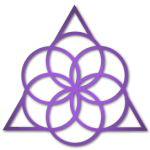We established Bowspring on January 13th, 2013 and our first main presentation of the new Bowspring alignment system was through the Roots asana sequence, which is the routine that Desi and I practiced intensely in 2012. Yet, it became apparent early in the year that for most students outside of Vital Yoga in Denver, the full Roots routine—composed of 54 base poses and 54 advanced poses in a total of 8 sets—was way too demanding as a regular practice, especially as a introduction to Bowspring’s radical new alignment ideas. Subsequently throughout the year, we increasingly modified and simplified our teaching of Bowspring to make the bow-spring alignment principles more accessible to a wider student base. In order to introduce Bowspring to new communities and beginning students we focused on the basic alignments of the optimal template within the most fundamental poses – standing, sitting, and lying down supine and prone. We sequenced these fundamental poses, which are all within the Roots, into an introductory flow that we call, “Earth sequence.”
Simplifying the sequence from the Roots to the Earth helped us teach the bow-spring template in a more accessible way to all levels of student. Over the last few weeks and months of 2013 we focused our teaching on the most common postural forms that students embody throughout their day, and we showed how Bowspring’s optimal alignment for both standing and sitting upright has the exact same shape in the torso and spine. In our optimal template we circumferentially expand the primary spinal curvature of the thoracic with a positive mind-set, and then actively spring-load the secondary curves of the sacro-lumbar and cervical areas of the spine. This alignment template is performed in every pose in Bowspring, even in transition between positions.

